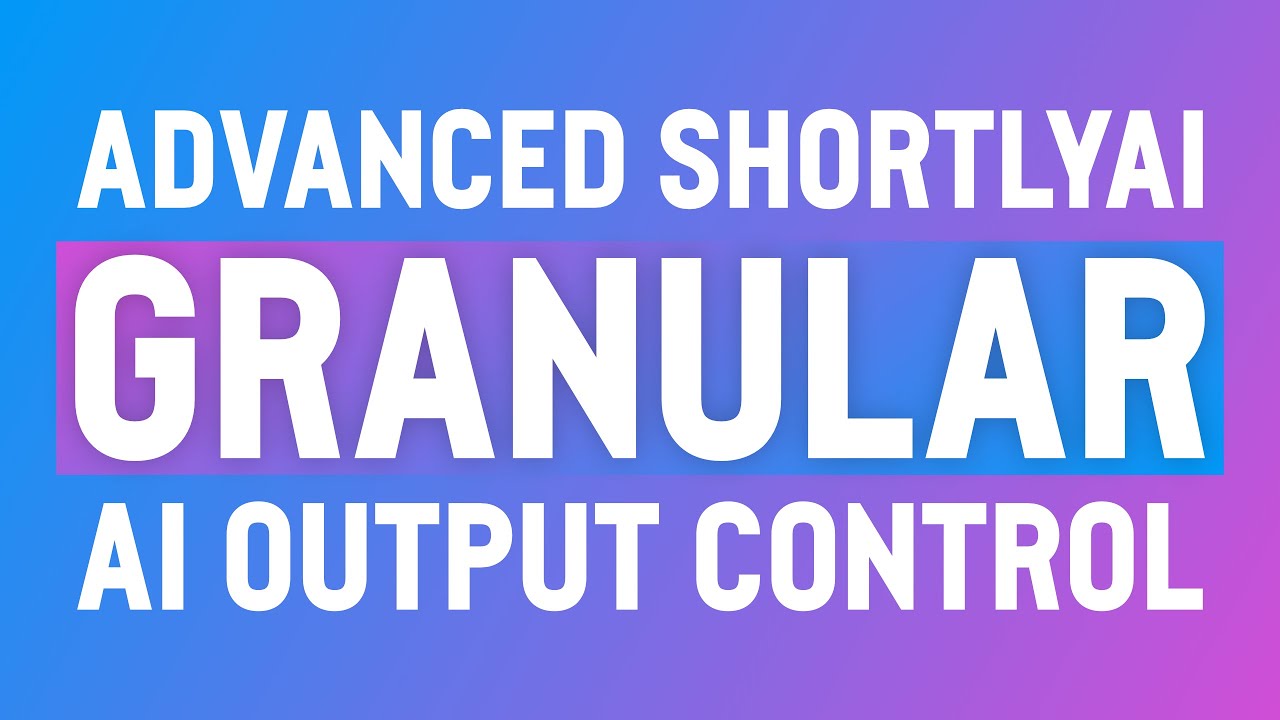AI Content Dojo
**Update: I apologize, the “scale” for these granular controls is –, —, ++, +++. There is no single – or single +. I’ve updated the guide, but unfortunately, it’s still in the video. 😬 Sorry, I make mistakes sometimes too. 🤗
Show notes: https://aicontentdojo.com/advanced-shortlyai-granular-control-of-gpt-3-ai-output/
🔥 More on ShortlyAI: https://aicontentdojo.com/shortlyai-your-ai-writing-assistant/
#gpt-3 #aiwriting
/instruct [Write a witty introduction to an article about the new granular controls in ShortlyAI, the best GPT-3 based AI writing tool on the market. ++outstanding ++fundamental]
Did you catch those ++ signs? What the heck are those!? They’re part of a new advanced feature in ShortlyAI I call “the granular AI controls,” and they give you unique capabilities to get what you want from your AI assistant.
Weighted output control
This new feature gives you weighted control over the output returned from the AI. Essentially giving you a way to control whether or not certain words appear in the content written by Shortly.
A “–” means you want to see less of that word in the output. Such as: /instruct [write a poem about cherry blossoms blooming in Tokyo –Ueno]
This means I want a poem about cherry blossoms blooming in Tokyo but maybe don’t include the word Ueno (which is a part of Tokyo).
The opposite is true too. If I use a “++” instead, like: /instruct [write a poem about cherry blossoms blooming in Tokyo +Ueno] — then I want the AI to add extra consideration to use the word Ueno in the output.
This is weighted because I can add more +- as I want to stress the importance of some words that do or do not appear in the output.
For instance, you might do something like this: /instruct [write an accomplishment about winning 1st place in a local IT hackathon +++security]
This would inform the AI it was essential to use the word “security” in the output.
Why are these needed?
There will be times when you want something particular from the AI. Or times when the AI keeps returning something you don’t want. These controls give you the ability to fine-tune what you get from the AI.
And this ultimately means that you end up with a higher quality article in the end, with less time wasted with the AI assistant giving you good, but not quite what you wanted, content.
Also, there are sometimes more broad topics you’re asking the AI to write about, but within that broad topic, there are specifics you want it to think about when creating the content you want.
It’s just another level of control Shortly gives you, so your AI partner will better help you get more done — faster.
— is different than +++
Something else to keep in mind is that — is slightly different than +++. You can add “weight” to how strongly you do/don’t want a keyword added. Think of it like this:
-keyword = I’d rather you didn’t use this keyword
–keyword = please don’t use this keyword
—keyword = absolutely do not use this keyword
+keyword = if you could, maybe include this word
++keyword = please use this word
+++keyword = please try your best to use this word
But did you spot the primary difference? It’s in how — means the AI will absolutely not use the word in the output. But with +++, there’s a chance the AI won’t be able to use the word.
Don’t use them inline
Use the granular controls as I have demonstrated above — after the “request” in your instruct command. Do not do something like this:
/instruct [write a poem about cherry blossoms blooming in +++Tokyo]
This won’t work. If you want to let the AI know Tokyo was super important here, you will do this instead:
/instruct [write a poem about cherry blossoms blooming in Tokyo +++Tokyo]
Although you probably wouldn’t need to do that in this particular case — I hope it clarifies how these controls are used.
